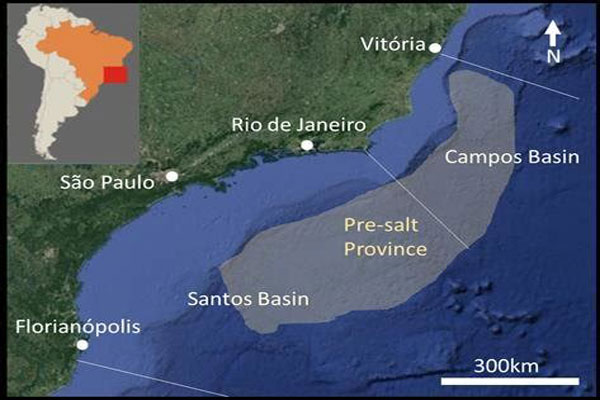Contents
Campos and Santos Basin

Introduction
Located off the southeast coast of Brazil, the Campos and Santos Basins have emerged as prolific petroleum systems that have transformed the South American nation into a major global oil producer. Together the offshore basins account for over 80% of Brazil’s total oil production and reserves, spearheading growth in the country’s energy sector.
The Campos Basin, discovered in the 1970s, was Brazil’s first major offshore success. Lease sales and exploration offshore attracted foreign oil companies to operate alongside national oil company Petrobras. Several giant oil fields were uncovered in the 1980s and 1990s, establishing the Campos Basin as a core producing area.
Further south, the Santos Basin has taken over as Brazil’s primary offshore region. Major pre-salt oil deposits found in the 2000s offshore São Paulo state have led to rapid production growth from ultra-deep wells. Advanced drilling and production technologies have been utilized to tap into the extremely promising geology.
This article provides an overview of the history, current operations, and outlook for these two critical offshore basins. While the mature Campos Basin requires enhanced recovery techniques to maintain output, the Santos Basin promises to supply Brazil with substantial oil production for decades to come. The story of oil development offshore Brazil provides insights into unlocking complex deepwater petroleum resources.
History and Development of the Campos Basin
The Campos Basin is considered a highly prolific offshore oil province that has been instrumental in establishing Brazil as a major oil producing nation. Discovered in 1974 by the drilling of the 1-RJS-9A well which uncovered the Namorado oil field, the Basin stretches over approximately 33,000 square miles off the coast of Rio de Janeiro state. Early exploration in the Campos Basin was led by Petrobras, which made numerous significant discoveries including Garoupa in 1976 and Enchova in 1984.
In the 1990s, efforts to boost oil production in the now mature Basin intensified. This brought increased participation by major international oil companies like ExxonMobil, Chevron, and Shell, who partnered with Petrobras to expand development. Several major fields were discovered and came onstream during the decade like Marlim and Barracuda. Deepwater pioneers like the Petrobras 10000 and Vespucci exploration wells pushed depths further offshore.
Current Operations in the Campos Basin
Today over 40 fixed and floating oil platforms operate in the Campos Basin in water depths up to around 8,000 feet. Major installations include the P-34, P-54, and P-58 production platforms and the Cidade de Angra dos Reis and Cidade de Ilhabela FPSOs. Top producing fields are Marlim, Marlim Sul, Barracuda, Caratinga, Albacora, and Roncador. Production from Campos reached a peak of over 2 million bpd in 2010 but has declined in recent years as fields mature. Efforts continue to maintain output through revitalization programs, enhanced oil recovery techniques and continued exploratory drilling.
Meanwhile the Santos Basin has emerged as a world-class petroleum province since sizable pre-salt discoveries were made in the mid-2000s. Notable early commercial fields include Tupi and Jupiter, giant reservoirs lying beneath thick layers of salt below the seafloor. This spurred intensive exploration and production expansion activities by Petrobras and partners, with additional significant discoveries like Buzios, Mero, Sapinhoa and Libra. Production first began in 2009 via the Cidade Angra dos Reis FPSO at Tupi.
Currently over a dozen FPSO vessels operate in the Santos Basin, clustered in the prolific pre-salt play areas. The Basin stretches over 116,000 square miles with water depths up to 7,200 feet. Major oil companies active in the region besides Petrobras include Shell, Repsol, TotalEnergies, Petrogal and QPI. Production from the Santos Basin exceeded 1 million bpd in 2019 and continues rising. The region promises to be vital for Brazil’s future oil output as resources are still being defined.

